#now whether Horikoshi will keep him alive after the war….
Text
being a tomura fan is so rewarding. Every one of his designs is top tier. Thank you Horikoshi
#skinny greasy gamer boy check#slightly more deranged long haired king? check#buff bitch with thighs that can crush a man’s head and a cunty red cape? check#long hair Jesus-like character destroying the world in his wake check#monstrous amalgamation of limbs check#baby you want to hug and protect from the world CHECK#hello I am thinking about tomura shigaraki today#by the way there is no way he’s dead. like. thematically it makes no sense in the story.#he’s gonna come back one way or another and show#that he does have control of his life by helping wreck afo#now whether Horikoshi will keep him alive after the war….#the classic answer is ‘villain redeems himself by doing something heroic and then dying’#I’m hoping he doesn’t take that route because it’s a little played out#that said they’re like…. all going to jail if they live so….
19 notes
·
View notes
Text
Let’s talk about the future chapters and fates of some characters!
Oh boy so this is gonna be a long ass post but I just wanted to discuss things about the ‘war arc’!
First, I’ll start off with Hawks/Keigo Takami.
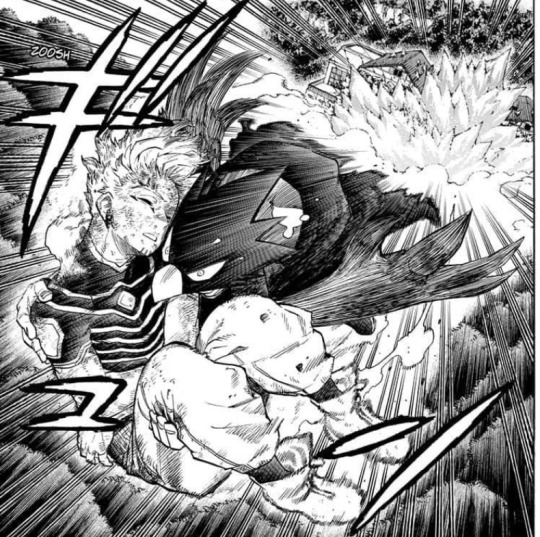
Status: Unconscious/Severely burned, escaped to the forest away from the mansion
Hawks has become quite the controversial character in the fandom. It’s up to the reader to decide whether they believe his actions was right or wrong. There is no correct/clear answer here. I won’t dive into any of that right now, instead I’m going to focus on what his arc holds in the future.
Since he hit his head on the concrete, he was knocked unconscious and could possibly go into a coma. (Because we know Horikoshi likes to drag things out when it comes to the possibility of Dabi being Touya.)
I do not believe Keigo will die. Especially now that he holds important information about Dabi. We also don’t know Keigo’s whole backstory yet nor do we know what really happened with Jeanist. The recorder he had got burned up with his jacket or was destroyed by Dabi in this panel:

You can see a little piece go flying from his hand just above his staples.
What I do believe is Hawks will die. His hero persona. Now that his wings are gone, the Hero Commission will most likely drop him just like that. Keigo will live on with the guilt of killing Twice. He really wanted to save Twice, trying to get him to surrender, only aiming to incompacitate him until, well... you know.
When Dabi calls him dirty, he doesn’t deny it. It’s probably going to impact him a lot when all this is over. The best direction for him is to have a talk with Tokoyami about his actions and break away from the HPSC. He should expose them since they groomed him as a child into a weapon, sent kids into a war, etc.
Personally, I’d love for Keigo to become a vigilante. It suits him much better at this point. I don’t think he’ll be able to regrow/regenerate his wings. There’s nothing left, plus he could only regenerate the feathers when there were his little stubs left. Also if you remember Endeavor talking about his blue flames it makes sense; “Carbonized cells can’t regenerate.”
Next up we have Tokoyami!
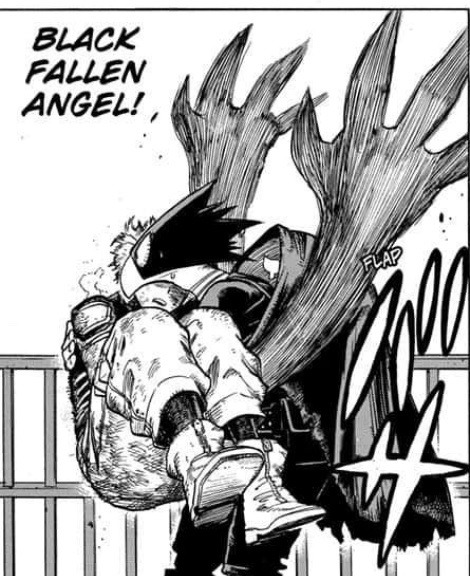
Status: Alive, slightly burned, escaped to the forest away from the mansion
I’ve seen many posts about how Tokoyami was brainwashed. This is simply not the case. The Hero Commission seems to kind of despise UA or doesn’t have all to that much influence with the school. Except for the time they didn’t want the cultural festival to take place (at least that’s what I remember). Many of the teachers have their own thoughts about the Hero Commission such as Midnight in the teacher’s conference saying that the kids shouldn’t be put in battles like this. Aizawa has his suspicions about the organization as well.
Tokoyami respects his mentor because Hawks taught him many things about his Quirk and gave him good advice. (“If you’ve got wings, you should spread them out and fly. Don’t be confined to the ground.) Hawks means a lot to Tokoyami so of course he’d come to his rescue. When Dabi points out Twice’s body, Tokoyami looks horrified. When flying away and telling Hawks he did the right thing, he was running on emotions and shock. His mentor needs medical attention and fast. Caleb, a translator for the manga, notes that Tokoyami drops his edgy tone when he says these things to Hawks. Tokoyami is panicking. He just wants Hawks to be safe.
Also, his experience/interactions most likely play a role in his thinking. These villains tried to kidnap him, kidnapped a classmate, killed multiple people and plan to kill many more, and attacked his class on several occasions. Why would he believe Dabi right away when Dabi has burned alive dozens of people, thugs and innocent heroes like Snatch, and is trying to actively kill his mentor and Tokoyami himself?
Again, I think Hawks and Tokoyami will have a talk after this and Tokoyami will have to question Hawks’ actions. Keigo will probably tell him something along the lines of ‘Don’t support what I did’ or ‘Don’t follow in my footsteps.’ Call me crazy, but there’s actually the possibility that the HPSC will take notice of Tokoyami’s power and the risks he took to save Keigo. They might offer him training to be a ‘special hero’ like Keigo was.
Miruko!

Status: Missing arm/part of leg, bleeding severely, in Jakku Hospital
Oh man where we last left off with the rabbit queen herself was her bleeding on the floor out of energy. Endeavor cauterized her wounds so at least it stopped most of the bleeding. It is worrying to know that she’s still in the hospital when Shigaraki is about to wake up and destroy everything.
Though I don’t think she’s going to die. Especially since that color page showed mechanical limbs in the same spot where she lost them. Horikoshi also loves drawing her, so let’s hope he likes drawing her enough to keep her alive lol. She’ll probably be in recovery for a while before resuming her hero work with her new prosthetic limbs.
Endeavor
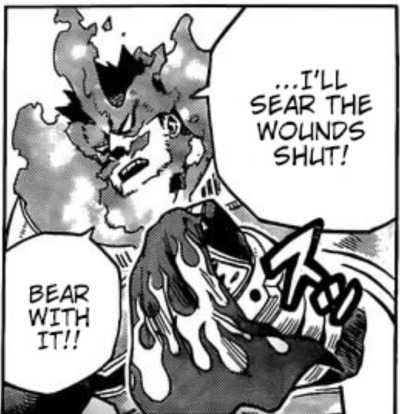
Status: Alive, in Jakku Hospital
Endeavor was taking on Nomu with Ryukyu in chapter 269. He is also in range of Shigaraki being in the hospital with all the other heroes. Many people believe he has huge death flags, but I seriously don’t think he’ll die this arc until we know what happened with Touya. Hawks might ask him about Touya if the black speech bubble was Dabi saying that he’s Endeavor’s son. This will both crush Keigo’s admiration for the flame hero and make Endeavor realize just how badly his abusive behavior affected his family. Perhaps he’ll go public with it? Or maybe the villains will use it against Endeavor one day and the public will turn on him?
Gigantomachia/Kirishima/Ashido
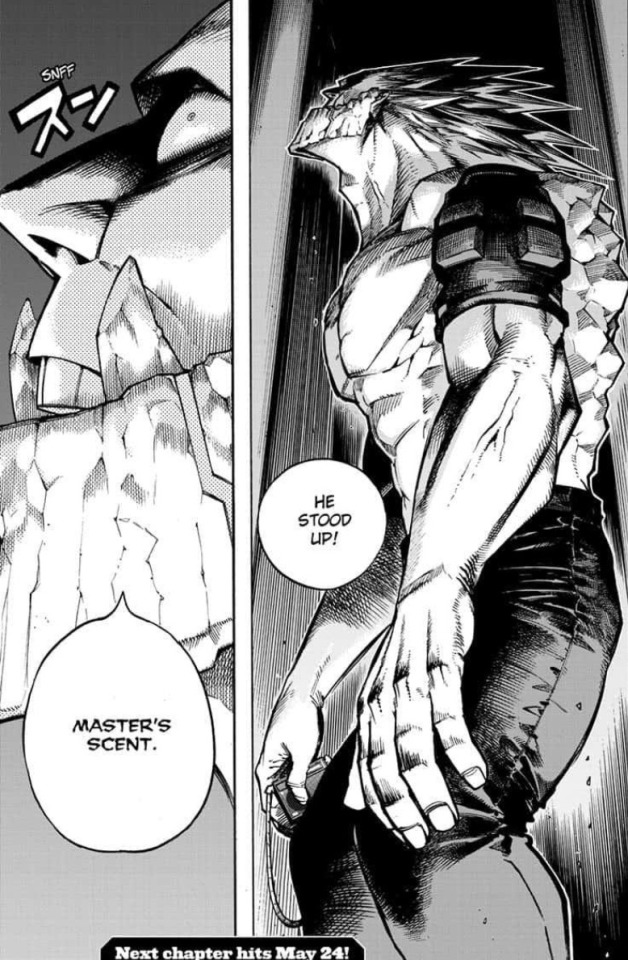
Gigantomachia is truly terrifying. He could wipe the floor and completely wreck the heroes. He has finally stood up and will be on the move, heading in Shigaraki’s direction because of his ‘Master’s Scent.’ Since Shiggy now possesses All for One, Giganto will follow his orders.
What’s even scarier is that this guy was introduced way back in Kirishima’s and Ashido’s backstory. Which means those two could possibly face this giant. Kirishima wouldn’t be able to make a dent, but Ashido could wear him down over time with the exposure to acid. I’ve also seen theories floating around about him being Crimson Riot. So Kiri facing his idol?
I’ll touch more on other characters later (Deku, Shiggy, Dabi, Mic, Aizawa, Kaminari etc.) but I’ll tell you guys which characters I think will die:
Xless (I mean, come on, Shiggy’s gonna kill this man)
Crust (we have no attachment to him, plus he hasn’t been fairing well with the Nomu. Not to mention he’s near Shigaraki as well)
Anyways, what do you guys think? Have anything to add like other potential outcomes of their arcs?
#bnha#bnha analysis#bnha spoilers#mha#mha spoilers#bnha manga#hawks#keigo takami#my hero academia#tokoyami fumigake#tokoyami#endeavor#enji todoroki#miruko#rumi usagiyama#bnha 271#gigantomachia#eijiro kirishima#mina ashido
211 notes
·
View notes
Text
Ranking Every Studio Ghibli Movie

Studio Ghibli's contribution to anime (and animation in general) cannot be understated. Founded by directors Hayao Miyazaki and Isao Takahata, and producer Toshio Suzuki, the studio has produced many of Japan's most hallowed films, movies that are both critically acclaimed and monsters at the box office. In 1996, Disney partnered with Studio Ghibli to bring their movies to North America, developing a new audience that has since come to age; now, Ghibli is as much a part of American childhood as Pixar and Dreamworks releases.
On Anime Pop Heart and @beneaththetangles, we are commemorating the studio with Ghibli Month all September long! I’m kicking things off by ranking Ghibli's twenty-one releases, plus Nausicaa of the Valley of the Wind, which is often honorarily included among the studio's slate, ranked from first to worst (including alternate viewpoints on a couple of the selections).

22. Tales from Earthsea
Miyazaki famously quarreled with his son, Goro, over the latter's ability to direct Tales from Earthsea, and indeeed, the final product feels like the result of a young man who was in over his head. The movie deserves its ignominious reputation, as it is inconsistent, poorly staged, and often terrible. It's a shame, too, for there are some strong elements to the film and enormous potential, with the outlines of an epic tale and compelling characters in Sparrowhawk and Cob (who are wonderfully dubbed by Timothy Dalton and Willem Dafoe, respectively)—it just never comes quite together and totally unravels at the end, resulting in the only bad film in Studio Ghibli's outstanding run.
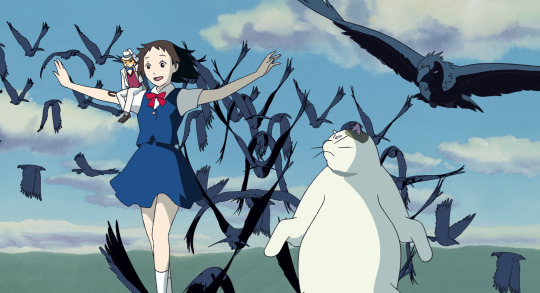
21. The Cat Returns
Most Studio Ghibli films are family features, made for children. However, they still capture the imagination of youth and adults as well. The Cat Returns, the only "sequel" in Ghibli's film catalog, doesn't do the same however. It is purely for kids, and aside from flourishes here and there that speak of fantasy adventures and feature whimsical characters, fails to engage viewers of a certain age—maybe anyone older than about twelve. A neat companion piece to Whisper of the Heart, it's worth watching, showing to your children, and then giving away to parents who need better-than-average entertainment to busy their children.
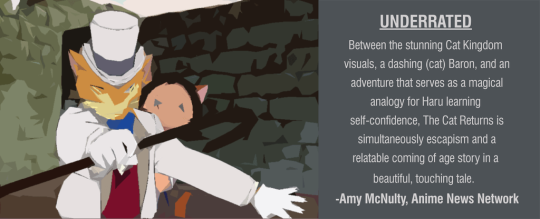
20. Ocean Waves
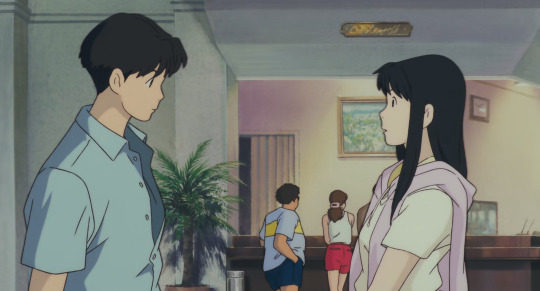
At one time, Ocean Waves was considered a black eye in Ghibli's filmography, an overpriced television movie that wasn't all that good. In retrospect, the intial judgments were only partially right. Ocean Waves is very much a TV movie, melodramatic and small in scale. The animation, too, is sometimes shoddy, but more often than not it's far better than it has the right to be. Ocean Waves is lovingly made, and the characters are almost frustratingly sincere—and oh so early 90s. While on the lowest tier of the Ghibli scale, Ocean Waves is far better than a simple curiosity.

19. Arrietty
Like Poppy Hill before it, there's nothing terrifically wrong with Arrietty—it just lacks the magic of the great Studio Ghibli films, making it rather forgettable. It's also sometimes dull. While beautiful colors, a foreshadowing of the spectacular animation to come of Yonebayashi in Mary and the Witch's Flower, shine through in the film, and some of the action sequences are highly engaging, our hearts are never fully in it. Maybe that's because we lack a loving connection to many of the characters, particularly to the pensive Sho. A nice watch, but one that's lacking.
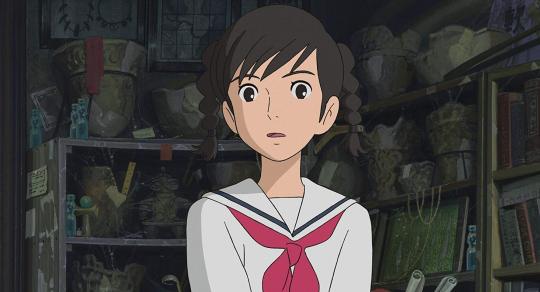
18. From Up on Poppy Hill
Much maligned for our lowest ranked movie, Goro Miyazaki returned from that entry with a stronger film, one that functions as an ode to historic preservation while presenting one of the studio's most lovely relationships—that is, until it gets a bit tricky, unfortunately begining to enter a zone unusual for Studio Ghibli, if standard fare for other anime. But that's a relatively minor issue in what's a perfectly lovely film that does well in evoking nostalgia in a movie that reminisces about the past and a Yokohama that no longer exists. Not every emotional moment hits as it should, but enough do to make the film Ghibli's best "date night" entry.

17. Pom Poko
Often criticized for being too over-bearing in its ecological message, Pom Poko's main issue instead is that it's meant to a collection of stories that to flow into one another, based on one group of tanukis' fight against urban development, but the movie doesn't feel cohesive, partly because there is no central protagonist. We only get to know each main tanuki so much, and none feel central to the tale—any could step in and play the necessary roles. Still, Pom Poko is unreservedly charming and often hilarious. It's also a peek into Japanese culture that we often don't get, a look at a country transforming in landscape and in values.

16. Ponyo
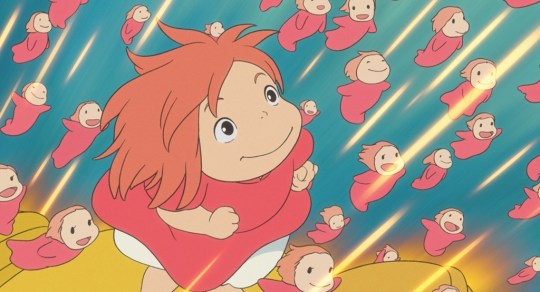
Why is Ponyo the low point of Miyazaki's output, the only film of his that doesn't attain the level of classic? It is wonderfully animated, bursting with energy and featuring a story that is never disingenuous and a heroine that is funny, cute, and breathtaking even. However, the film proved that Miyazaki was on a downward trajectory after Spirited Away. Repetition seen in Howl's Moving Castle was on full display in Ponyo, a new movie that too often feels like a rehash, featuring characters that other than the title heroine, fail to connect, and a story that is muddled and often just strange. Ponyo is a fun film and a better one after repeated viewings—the problem is that such defenses do not have to be made for any of Miyazaki's other works.
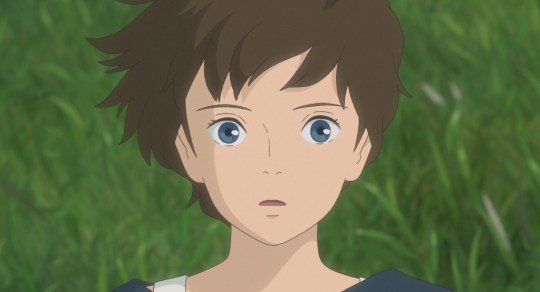
15. When Marnie Was There
The last feature film from Studio Ghibli to date is both quietly personal and a surprising risk. When Marnie Was There is the studio's first true mystery tale, and has a tone that's slightly haunting. The lead characters, also, are unusual for Ghibli—neither Anna nor Marnie are as embraceable as most of the heroines from Ghibli's past, but that seems be purposeful. What they demonstrate to us is not as much of "who we can be" but "who we are" and even so, how we can overcome. The creative energy of past Ghibli films is missing, but the replacement here by a surprising intimate tone in a modern setting is welcomed.

14. The Tale of the Princess Kaguya
While this notoriously expensive film flopped at the box office, The Tale of the Princess Kaguya was well-received by critics, and for good reason. Adapting a famed folk tale, the film is animated in style befitting its origins, creating the sense that the viewer has fallen into a some traditional Japanese painting. But the movie is not as pastel as its colors indicate—the storytelling is bold. It doesn't sit in the past, instead feeling remarkably current in the fable of a princess imprisoned by seemingly everyone and everything, without ever feeling worn or heavy-handed. Mystical and fantastical elements are both woven into the foundation of the story and come alive in key moments, keeping the film compelling (for the most part) throughout its two hour+ run time.
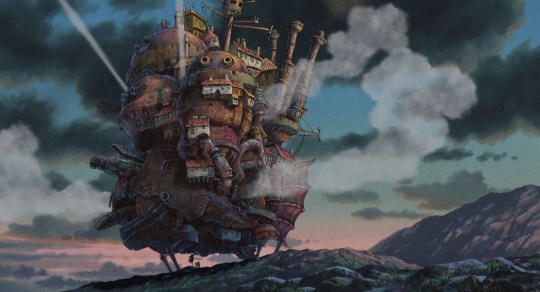
13. Howl's Moving Castle
An underrated aspect of Studio Ghibli's brilliance is in how they often adapt already-beloved works. Adapted by the master, Howl's Moving Castle, based on the novel by Diana Wynne Jones, is gorgeously animated and bold in both design and character—Howl and Calcifer, particularly, are memorable (and give strong emotional weight to the tale). While it suffers in comparison to its predecessor, Spirited Away, by being a little unwieldy, it remains a classic and an example of how well Miyazaki can bring themes and plot points across subtly (think of the flashback of Howl) in a movie that's otherwise fierce and larger than life.

12. The Wind Rises
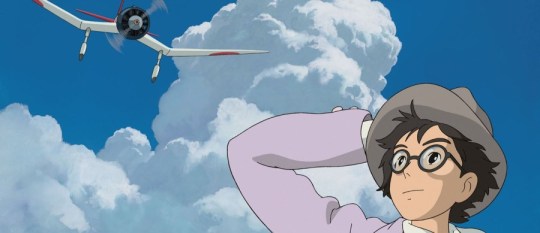
From conception, The Wind Rises was a challenging film—how do you tell the story of the man who designed a fighter essential to Japan's WWI efforts, and show him as a patriot and dreamer without excluding the crimes of the nation, or making a film that goes against Miyazaki's anti-war values? It's difficult to say if he succeeds, but the film itself is beautifully crafted. The supporting characters here are less important than in other works, so it's vital that the audience admires Jiro Horikoshi, and we do—his character and positivity make him easy to root for, and dream sequences in the film both flesh out his thought process and keep us captivated. Once believed to be Miyazaki's last film, if it had been, The Wind Rises would have been worthy of that designation.

11. My Neighbors the Yamadas
The oddball in Ghibli's filmography, My Neighbors the Yamadas is presented through half-a-dozen or more short stories in the style of comic strips come to life, with animation that matches. The magic in the film is that the Yamadas are as over-the-top as the movie's aesthetic is, yet maintain an authentic feel. Think of some of the most popular family sitcoms of the 1980s and 1990s, but with an addition those shows could not feature—fantastical sequences that break in without warning and bind the ties of family further. We may not want to live like the clumsy Yamadas, but the heart of the family will make you consider whether they're the ones who really have it all together.
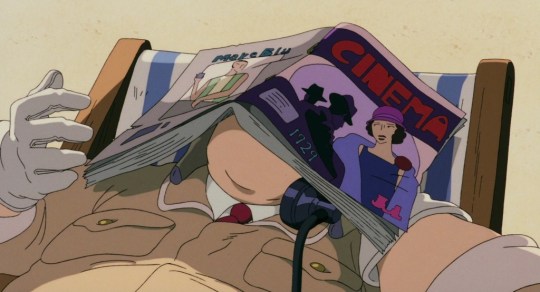
10. Porco Rosso
Studio Ghibli films share animation styles and themes, but one can never say they lack in variety when it comes to story. The tale of Porco Rosso is of an ace pilot cursed into living as a pig—but not to worry! He is still adored by women as he flies fantastic missions while running from fascists, pirates, and fame-seeking assassins. Porco is gruff and unattractive, but both he and the tale are sweet, as what's already a compelling story of WWI aces and dogfights is buffeted by grief, romance, and two strong heroines of very different types and roles. Perhaps the film with the largest range of opinion among the Miyazaki classics, Porco Rosso is nonetheless fantastic, and require viewing if you haven't watched it already.
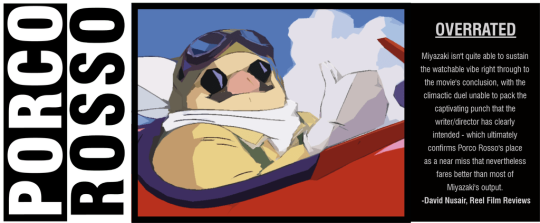
9. Whisper of the Heart

Ghibli's most unabashedly romantic film is one of its most formulaic, but still among its best. The debut film by Yoshifumi Kondō, Miyazaki and Takahata's proposed successor before he died just a few years after the movie's premiere, is at once encouraging while also refusing to shy away from the melancholy experienced by children—and adults, too—when one doesn't seem to have what it takes to become great. In joy and sadness, Whisper of the Heart lets the kids at the center of the film be kids. They are at times stubborn, silly, and immature, and by treating them that way, the movie never drifts into something banal (with the possible exception of the famously abrupt ending)—it's a lovely lesson in growing up and meeting challenges, and a personal favorite.
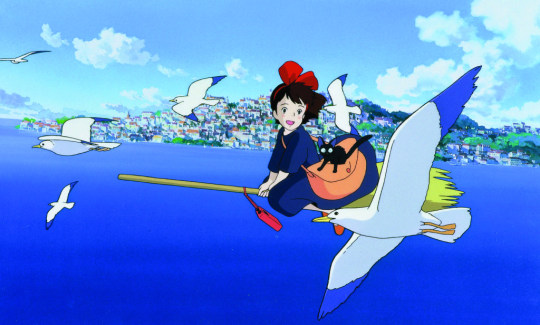
8. Kiki's Delivery Service
The charm of Kiki's Delivery Service is two-fold—in the setting, a northern European-style town that is alive, forcing the events of the story through its residents, cozy cafes, and early 20th-century transportion, and in Kiki's journey itself. Her community's tradition of sending of young witches to live by themselves at the age of thirteen sets the story in motion, and Miyazaki captures the spirit of a girl that age perfectly—in all its confusion, energy, enthusiasm, and difficulty. Kiki is not a subtle character, but her growth is. When she takes to the air for the finale, Kiki isn't experienced enough to know if she can save the day—and so we cheer when she realizes what the rest of us already know, what we've all experienced ourselves, that it takes time and failure to mold us into becoming the hero.

7. Castle in the Sky

Miyazaki created classic film after classic film for decades, in a streak that started with Lupin III and ended, I'd argue, with Howl's Moving Castle. Often forgotten among the wonders is Castle in the Sky, a steampunk entry that is a joyous adventure, akin to Treasure Island but developed for an audience of both boys and girls. Sumptuous cloudscapes fill the screen, as do colorful characters with meaty roles, including a group favored by Miyazaki—pirates (in this movie, air pirates led by Dola, an older female). Reflective of Miyazaki's ability to master genres, Castle in the Sky again crosses fantasy and sci-fi in perfect proportions, underscoring an uplifting tale with an apocalyptic story line.

6. Nausicaa of the Valley of the Wind
Unofficially part of of Ghibli's canon, the success of Nausicaa, based on Miyazaki's own manga and exploring the ecological, anti-war, and feminist themes for which the studio's future films would be noted, launched Studio Ghibli. Nausicaa herself remains one of the studio's most iconic and compelling heroines, a physically powerful and feminine hero who must grow into adulthood very quickly while putting aside deep flaws to offer salvation to her people and land. The beautiful landscapes speaks to the epic story, better fleshed out in the manga, while reminding us that Ghibli films are giants not only in animation, but in fantasy and sci-fi realms as well.
5. Only Yesterday
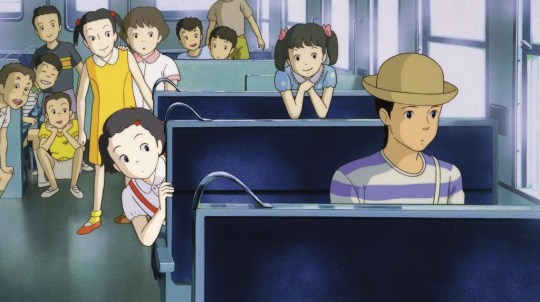
How do you create an animated film about a twenty-something woman that waxes nostalgia while on a trip to the countryside, and at the same time make it entertaining and accessible? It's not an easy task, but Only Yesterday accomplishes it fully. Taeko, the protagonist, explains, "I didn't intend for ten-year-old me to come on this trip, but somehow, once she showed up, she wouldn't leave me alone." We experience her nostalgia for and complicated feelings about the past through a family that's genuinely flawed, while experiencing her visit to relatives in the countryside in the present, a trip that is subtly life-altering, one that pushes her to consider who she is and who she wants to be. Oh, and the film also features one of anime's most wonderful endings, set to a cover of a now-classic love song.

4. Grave of the Fireflies
It's a testament to Miyazaki's stature that the first three Ghibli films on the list are all directed by him, and also to the supreme talent of the other directors that their films rise above some of his other tremendous work. Directed by Studio Ghibli co-founder, the legendary Isao Takahata, Grave of the Fireflies is the most painful and emotional movie in the canon; it is also one of the greatest war movies ever made, using animation to deftly explore the how war victimizes children. Opening and closing shots, both of which express the uncaring nature of bystanders (and by extension, the world) toward children cause us to wonder what we really feel about the world's most vulnerable population.
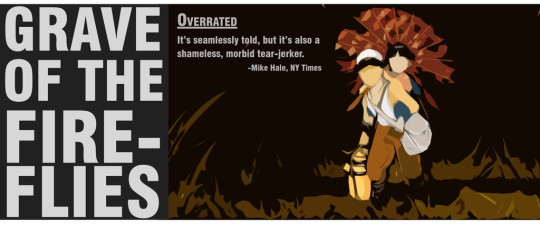
3. My Neighbor Totoro
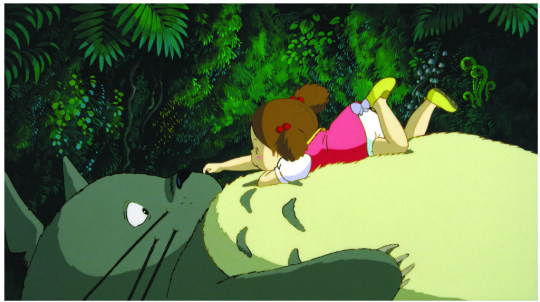
It's often said that nothing really happens in My Neighbor Totoro—but that's part of the magic of the film. A child's movie in all ways, including in the action, which revolves around a sick mother, a move to a new house, and a lost child, the film finds its center in a magical being that never says a word (Totoro only growls), and about whom many theories abound. If Totoro is a figment of Satsuki and Mei's imaginations, he is then similar to Winnie the Pooh, a necessary presence in the lives of a child character (two of them, sisters, in this case) who is growing up in a difficult situation, not to adulthood, but to the next step in the journey of life.
2. Spirited Away

Miyazaki has retired and unretired several times—when did so following Princess Mononoke, he returned with what is often considered his magnum opus, Spirited Away. At once deeply Japanese and completely accessible, the movie takes viewers on one of the most remarkable visual journeys ever put to film, a feast that never relents through its entire run time. Perhaps underrated is Miyazaki's decision to move the action away from the bathhouse for much of the final act, a quiet last leg that is key to Chihiro's journey, as well as for many of Spirited Away's supporting characters. Absolutely deserving of all love and acclaim.
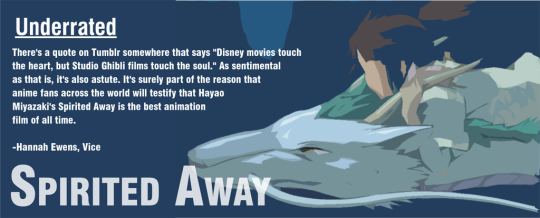
1. Princess Mononoke
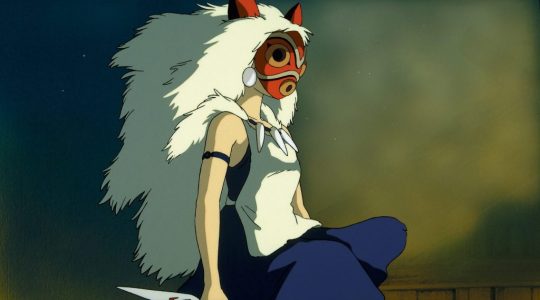
Studio Ghibli's finest film is also perhaps its most surprising. Visceral, violent, and conflicting, Princess Mononoke is no easy tale to absorb. There is no "good guy," not in the traditional sense, as Miyazaki explores hist favored ecological theme but through the lens of humanity struggling to survive in a world where they are just surpassing nature, the beast gods and goddesses who had previously ruled. It is an epic in the vein of films from decades before with vibrant and complex characters, ground-breaking animation, and an English voice track that is second to none. The studio's most intricate work, Princess Mononoke requires multiple viewings to fully appreciate.

--
All Studio Ghibli movies are available for sale, including many in special collectible editions. We encourage you to go check them out!
155 notes
·
View notes